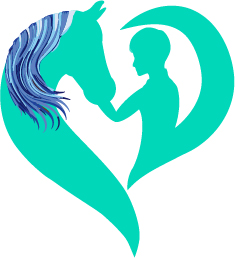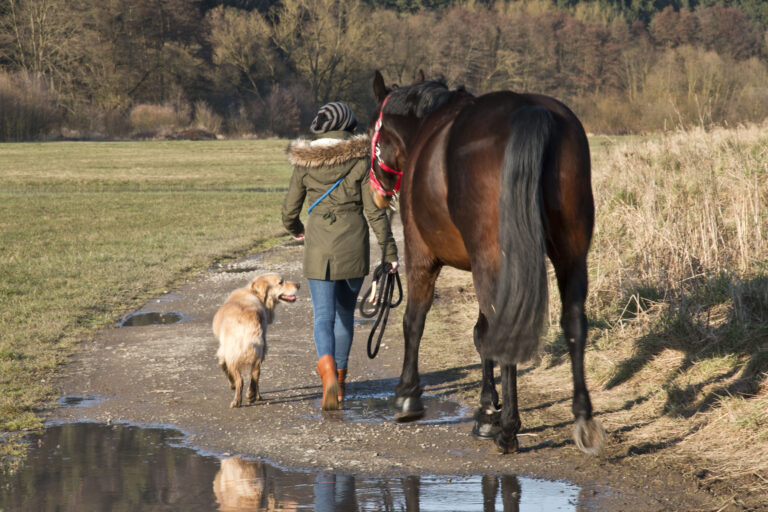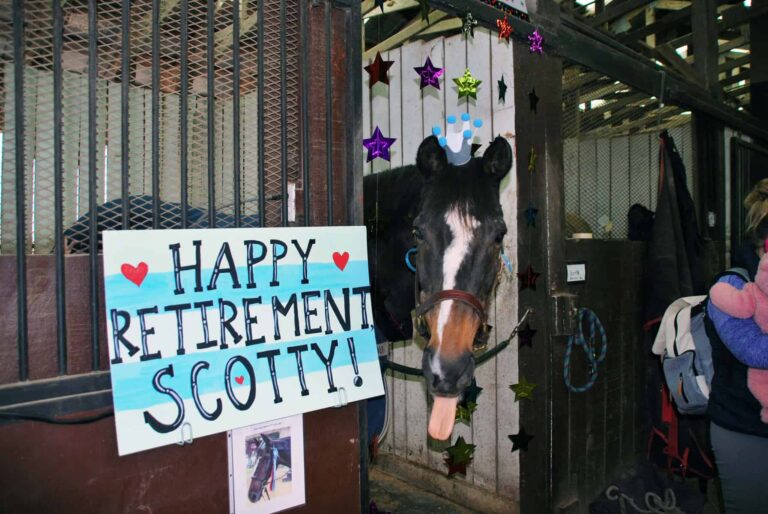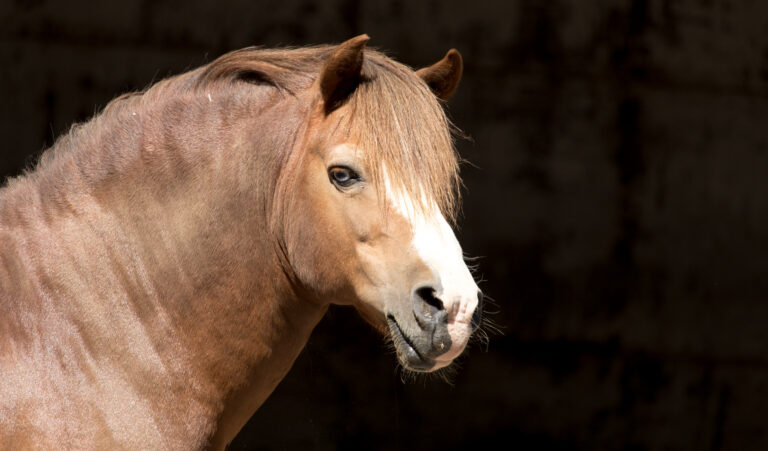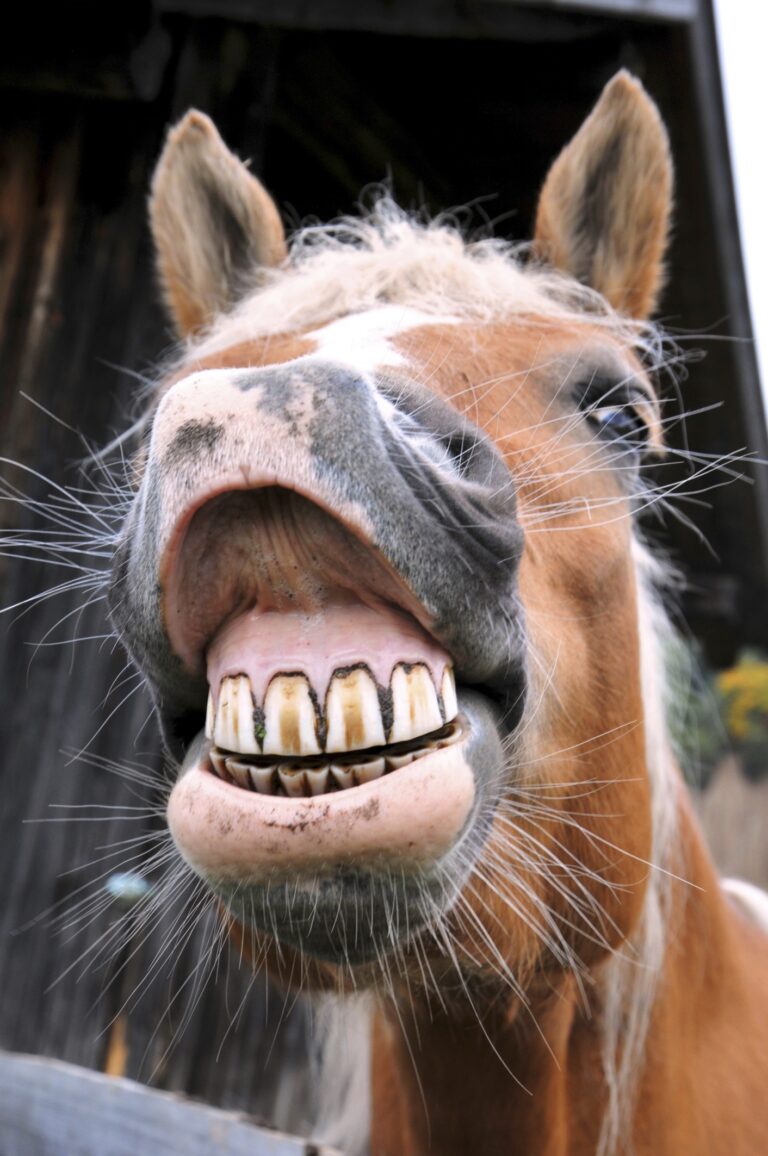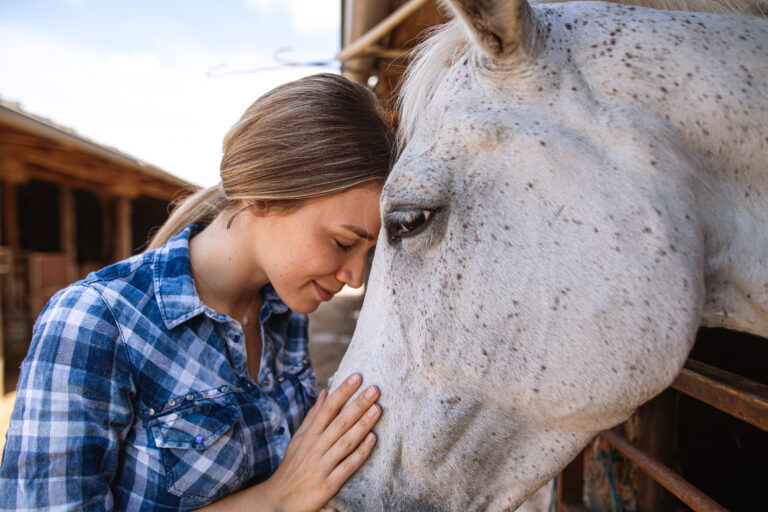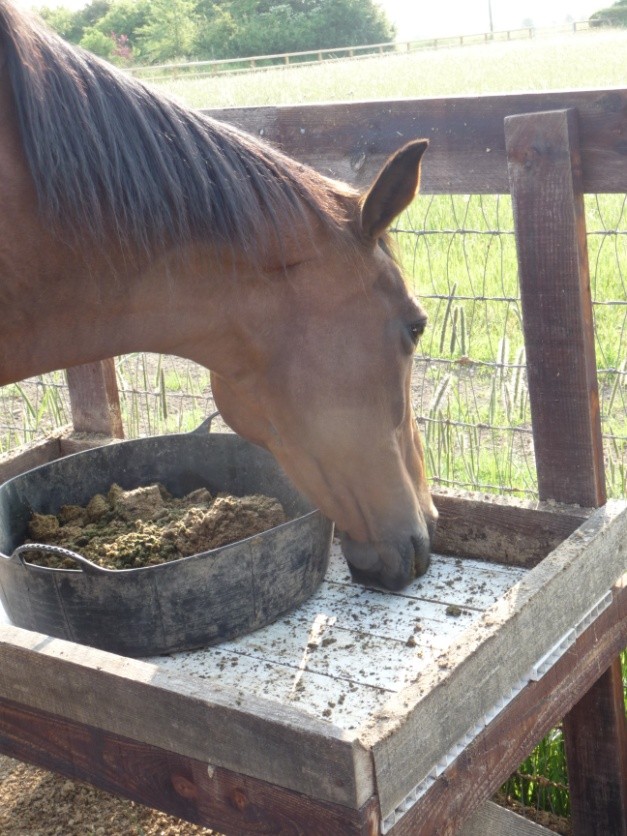The Kentucky Horse Park (KHP) mounted police is one of the top mounted units in the world. Among their top police horses are several seniors.
The KHP Mounted Police and the Lexington Mounted Police units host the annual National Mounted Police Colloquium and Civilian Sensory Clinic at the Kentucky Horse Park. These clinics bring people and horses from all over the country to learn new techniques, share ideas, and train their horses. Training is always conducted in a controlled environment geared toward improving the confidence of both the horse and rider.
In this video (and other videos to come), we talk to Captain Lisa Rakes, Mounted Unit Commander at the Kentucky Horse Park. Her partner is Oliver. The gelding is a 16-year-old Shire cross. Rakes and Oliver have been together since the gelding was 5 years old.
(Editor’s note: The content of this video is the expert’s approach to the topic. Please consult with your practitioner if you have questions.)
Mounted Police Work Day
“Oliver’s work day is very similar to my work day,” said Rakes. “It could be an 8-hour day or a 10-hour day. Or, if we are doing something really big, it could be a 16-hour day. When I’m working, Oliver is working. And when I’m off, Oliver is off.”
Rakes said what they find works best for them is turnout every night for the mounted horses. “Even during the day, if they aren’t scheduled to work, they are out,” she said. “That way they can move their joints, move their muscles…be a horse! Play. Use their brains in ways that’s not concentrated on work.”
The horses that are working come in from their paddocks or fields at about 7:30 in the morning. They are fed, then start their work-day routine. They get baths, groomed, tacked, and readied for patrol through the Kentucky Horse Park.
“What we are looking for on patrol is traffic, keeping the park safe, alarms, accidents, and things like that,” said Rakes. “Most of our patrols in the Park are at the walk. I think that’s very beneficial to the senior horse because we are getting these horses out. We’re getting their joints moving. And we’re doing that at a brisk walk, so they aren’t sitting in their stalls for 16 hours a day.”
The first part of the patrol will be at the walk for 1.5-2 hours. In that time they might cover 3-5 miles. That depends on how much they stop to talk, or if they have to write a ticket.
Sometimes special assignments mean they will be more stationary. “But when possible, we like to keep moving,” said Rakes.
After first patrol, the horses are given a break in the barn to get water and hay. After the break, the next patrol might last 1-1.5 hours. Again, mostly at the walk.
Other KHP Mounted Police Horses
There are 10 horses in the KHP mounted police unit. Half of those horses are 15 years of age or older. One other horse (aside from Oliver) is 15, two are 19, and one is 23 years old.
Something Rakes is proud of is that there are different breeds used for mounted police work. Those breeds at the Kentucky Horse Park also include a Clydesdale cross, a Belgian cross, a Percheron cross, a Drum horse, a Gypsy Vanner, and a Spotted Draft.
Turnout
One of the keys to keeping the police horses happy and healthy is turnout, said Rakes. The other thing is exercise.
“With a senior horse, you ‘use it or you lose it!’ And that’s with the humans, too!” said Rakes. “We are out here exercising them, but we aren’t exercising them in a hard way.” She said the horses do trot and canter, and the officers take lessons on the police horses.
Management and Care
Horses that need it are given joint supplements. In the summer, sometimes the horses get electrolytes. The unit works closely with the attending veterinarian and farrier, paying attention to individual horse needs.
“Oliver is on some probios [probiotics] to help his gut,” she said. “The Gypsy Vanner is the oldest horse we have at 23, and he’s hardly on anything!” Rakes said with a laugh. “He’s a little workaholic. He’ll outwork any of these horses. The only thing we give him is a little probio.”
Senior Mounted Police Horses
Rakes thinks the senior mounted police horses are ‘so valuable’ in their jobs at the Park. “Oliver is the leader, literally, in any big event that we do,” she explained. “We couldn’t do it nearly as well if Oliver wasn’t leading the way.
“How does Oliver do it better than other horses? Because he’s been there, done that, he’s seen it,” she explained. “He’s quiet and level-headed. He’ll get to a big event and stand there and cock a leg to rest or take a nap. And he ‘babysits.’
“When we have a young horse in or we are introducing a young horse to something special, we want to pair that young horse with a senior horse,” said Rakes. “That way the young horse can draw the confidence that he needs from that senior horse that’s saying, ‘Oh, hey, it’s going to be okay.’ Oliver is great at that.”
At one point, Rakes had three foals to raise and train as mounted police horses. “Oliver was their babysitter,” she said. “And he put them in line!
“Now it’s kinda cool to see that he’s working right alongside those guys now,” she continued. “He’s taught them how to be really good police horses.”
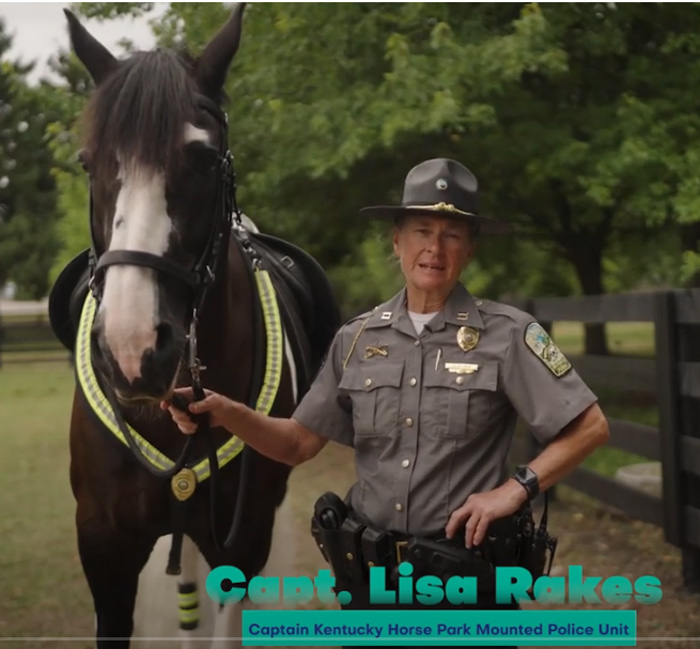
Captain Rakes and the Colloquium
Rakes has been policing since 1990. She retired from Lexington Mounted Police unit in 2013. “I tell everybody that I had a two-day retirement. I retired on a Friday and started at the Kentucky Horse Park on a Monday.”
All of that time except the first 5 years of policing, Rakes has been in a mounted unit. She said throughout that career, she has always had senior horses as part of the mounted police units.
The KHP and Lexington Mounted Police units host the national Mounted Police Colloquium. She began working with that training and competition event when she was in the Lexington unit.
“Every year I handle the registration of those horses that come, and so many of them are seniors,” she said. “They are able to pair the seniors up with younger horses in their squads and help them travel well and in the stable settle in well. Even in the training, you can pair that senior horse up with a young horse or a young [inexperienced] rider. You have to take that into consideration. If you have a young rider, they don’t need to be on a young [inexperienced] horse. Pair him up with a senior horse that will kind of take care of him.”
The Colloquium has been in existence for 40 years. “That combination of mounted police officers from across the country coming to enhance their training skills and help their horses be better. That’s why they keep coming back here.”
The education at the Colloquium isn’t just riding and obstacle training. They have classes on topics such as farriery work, nutrition, and veterinary work. “Anything we think will be useful to the officers to take back to their departments and their communities,” noted Rakes.
They Need A Job
“I think horses need a job,” said Rakes. “It makes them feel like they have a purpose in life other than hanging out and not knowing what they are going to do for the day.”
She said the KHP mounted police horses always come to the front of the stall and seem to be asking, “What are we going to do now?”
Rakes said the cool thing about mounted police work is the variety. “The horses aren’t just going around in an arena every day,” she said. “One day we might do a lesson in an arena. The next day we might be trotting cross-country. Another day we are sitting at an intersection for four hours directing traffic from horseback. We might go downtown and do a parade. Then they get to see all the sights and sounds of lights and sirens and traffic and people waving.
“Especially for us in our job, there are so many things the horse has to look forward to,” Rakes explained. “It is work, but it’s fun work. It’s something he looks forward to doing and wants to do.
“He still gets to be with his buddies. We try to patrol with a partner,” she explained. “Horses are herd animals. They don’t like to go out by themselves. They don’t want to take a lesson by themselves. When we can go out and patrol with another horse, it make them fell like a horse. To feel like he’s part of a herd. And he has a job and is being useful.”
Further Reading
- My Senior Horse Podcast: Horses and the Science of Harmony. Dr. Sue Dyson. MySeniorHorse.com
- The 24 Behaviors of the Ridden Horse in Pain: Shifting the Paradigm of How We See Lameness. Dr. Sue Dyson with Padma Video.
- Horse Behavior During Tacking and Mounting. Dr. Sue Dyson. MySeniorHorse.com
- Ridden Horse Performance Checklist: Behaviors in Ridden Horses that Might Signify Discomfort. Dr. Sue Dyson. MySeniorHorse.com
- How An Uncomfortable Horse Might Feel to a Rider. Dr. Sue Dyson. MySeniorHorse.com
-
Editors of My Senior Horse are journalism professionals, most of whom are lifelong horse owners.View all posts


